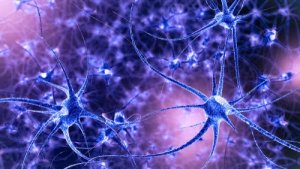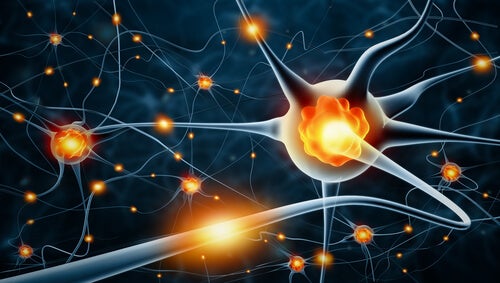Brain Plasticity: Characteristics and Types

The term “brain plasticity”, also known as neuroplasticity, is related to our nervous system’s ability to modify itself both functionally and structurally. This happens naturally as time goes on, but also in response to injuries.
In a literal sense, plasticity is a physical object’s ability to be physically manipulated. So, if you think about that in the context of your brain, it means that your nervous system has the ability to respond to internal and external stimuli by reorganizing its structure, connections, and functions.
Plasticity is a key part of your brain’s neural development and the proper functioning of your nervous system. It also responds to your changing environment, aging, and any illnesses. It’s there to help neurons take on new properties, but also to make sure you always have enough neural connections.
Our brains are “plastic” structures. Several scientific studies have shown that. We also know that brain plasticity occurs in multiple nervous system revela. There’s plasticity in your nervous tissue, neurons, glial cells, synapses, etc.

How do neural networks work?
Brain plasticity happens mostly as a response to physiological needs, changes in neural activity, or nervous tissue damage.
Plasticity also has a role in the formation of your neural networks when you’re growing up, learning new motor skills, or other things you’ll use throughout your life. Plasticity plays a role in many biological processes, such as:
- Neurogenesis.
- Cell migration.
- Changes to neuronal excitability.
- Neurotransmission.
- The creation of new connections.
- The modification of existing connections.
Structural and functional brain plasticity
The plasticity and efficiency of transmission between neurons depends on adaptive changes to presynaptic, extracellular, or postsynaptic molecules. This means that plasticity can occur without the need to change the number, placement, layout, density, or overall area of your synapses.
Early phase long-term potentiation and changes to electrical properties from geometrical changes in dendrites are clear examples of this kind of plasticity. as for the changes in the connectivity of circuits involving the formation, elimination, or widening of synapses.
Hebbian and homeostatic brain plasticity
The plasticity of the efficiency of transmission and structural plasticity can also be classified as Hebbian and homeostatic brain plasticity, respectively.
With Hebbian plasticity, there’s a change to the strength of a synapse. This can mean either an increase or a decrease, and it can happen seconds or minutes after a stimuli.
Early phase long-term potentiation is a typical example of Hebbian plasticity. It starts when a stimulus activates the corresponding pre- and post-synaptic impulses, which will boost synaptic efficiency. That boost will also help increase the potentiation. In other words, Hebbian plasticity creates a positive feedback loop.
Homeostatic processes, on the other hand, are much slower. They can take hours or days. They can also modify the density of ion channels, the release of a neurotransmitter, or the sensitivity of a postsynaptic receptor.
Unlike Hebbian plasticity, homeostatic plasticity creates a negative feedback loop. The homeostatic form decreases connectivity as a response to high levels of neural activity. It then brings connectivity back up once that activity has died down.

Hebbian and homeostatic: Two different roles
Some people have suggested that Hebbian and homeostatic plasticity have different roles in terms of neural network functions. Hebbian plasticity plays a role in the changes that happen throughout our lives, our ability to store memories, and the durability of your memory.
Meanwhile, homeostatic plasticity has to do with the self-organization of your neural network. It does that to keep the network stable. This type of plasticity also makes use of synaptic and extra-synaptic mechanisms such as the regulation of neuronal excitability, synapse formation, synaptic strength stabilization, and dendritic branching.
You can see plasticity happening as a nervous system develops. It’s a key attribute that allows your brain to modify its own structure and functions in response to changes in neural activity. It also helps you gain new abilities, as a basis for learning, memory, or re-learning something after an injury.
In conclusion, it’s a process that allows your brain to stay flexible. Being flexible means being able to better adapt to your environment and, therefore, survive.
All cited sources were thoroughly reviewed by our team to ensure their quality, reliability, currency, and validity. The bibliography of this article was considered reliable and of academic or scientific accuracy.
-
Cramer, S. C., Sur, M., Dobkin, B. H., O’brien, C., Sanger, T. D., Trojanowski, J. Q., … & Chen, W. G. (2011). Harnessing neuroplasticity for clinical applications. Brain, 134(6), 1591-1609.
-
Fauth, M., & Tetzlaff, C. (2016). Opposing effects of neuronal activity on structural plasticity. Frontiers in neuroanatomy, 10, 75.
-
Lisman, J. (2017). Glutamatergic synapses are structurally and biochemically complex because of multiple plasticity processes: long-term potentiation, long-term depression, short-term potentiation and scaling. Philosophical Transactions of the Royal Society B: Biological Sciences, 372(1715), 20160260.
This text is provided for informational purposes only and does not replace consultation with a professional. If in doubt, consult your specialist.








